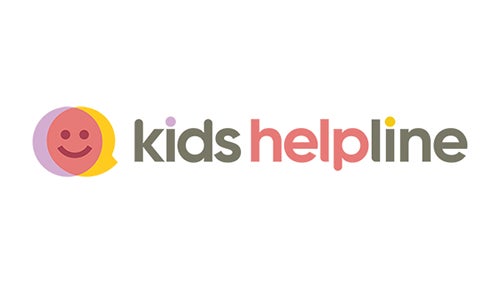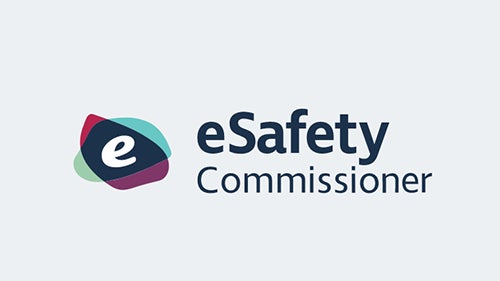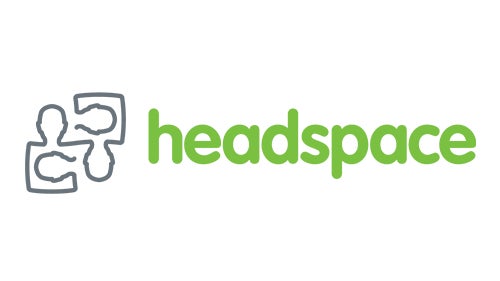Cyberbullying: What it is and how to handle it
We brought together international cyberbullying and child protection experts as well as people from Facebook, Instagram, Snapchat, TikTok and X to help answer questions and give advice on dealing with online bullying.

What is cyberbullying?
Cyberbullying is a form of bullying that happens in the digital world. It can happen on social media, messaging apps and gaming platforms. Cyberbullying involves repeated actions meant to scare, anger or shame the person being targeted, such as:
- Spreading lies about someone or posting embarrassing photos or videos of them on social media.
- Sending hurtful, mean, or threatening messages, images or videos through messaging apps.
- Pretending to be someone else and sending mean messages to others using their name or through fake accounts.
Sometimes, face-to-face bullying and cyberbullying can happen together. But the difference with cyberbullying is that it leaves a digital record. This can be helpful because it provides evidence that can be used to stop the abuse and protect those who are being targeted.
Am I being bullied online? How do you tell the difference between a joke and bullying?
Sometimes it’s hard to know if someone is joking or being mean to you online. Friends often joke around, but if you feel hurt or think they’re laughing at you instead of with you, it might be bullying. Even if they say, ‘just kidding’, if it keeps happening and makes you upset, it’s not ok.
Bullying online can involve people you don’t even know, and it’s important to remember that you don’t have to put up with it if it makes you unhappy. Whether it’s online or in person, if something feels bad and doesn’t stop, it’s a good idea to ask for help.
Stopping cyberbullying isn’t just about calling out the bullies, it’s also about understanding that everyone deserves respect, both online and in real life.
In Australia, eSafety can help
Online platforms like Facebook, Snapchat and X are responsible for ensuring people follow their terms of service. This means they can take action to stop cyberbullying. But sometimes that’s not enough.
In the most serious cases, when the platform does not help, eSafety can help you. eSafety can direct them to remove harmful content sent to an Australian or posted or shared about them. Sometimes, they may be able to fine or take legal action against a platform that refuses to remove harmful content or the person who sent, posted or shared it.
What are the effects of cyberbullying?
When someone bullies you online, it can feel like they’re attacking you everywhere, even in your own home. It’s hard to escape from it. The effects of cyberbullying can last for a long time and impact you in different ways.
- Mentally – it can make you feel really upset, embarrassed, or even scared and angry.
- Emotionally – you might feel ashamed or lose interest in the things you used to enjoy.
- Physically – cyberbullying can make you tired because it can keep you up at night, and it can even cause symptoms like stomach aches and headaches.
Being laughed at or harassed by others can make you feel like you can't speak up or do anything about it. In really serious cases, cyberbullying can even lead to people feeling so hopeless that they consider hurting themselves.
But it’s important to remember that these effects can be overcome, and you can regain your confidence and wellbeing. There are ways to deal with cyberbullying and get the help and support you need.
How can cyberbullying affect my mental health?
When cyberbullying happens to you, it can make you feel really bad about yourself. You might start feeling ashamed, nervous and insecure because of what people say or think about you. It can make you want to stay away from your friends and family, and you might have negative thoughts and talk to yourself in a mean way. You might even feel guilty for things you did or didn’t do, or like people are judging you in a bad way. It’s normal to feel lonely, overwhelmed and have headaches and feel sick in the stomach.
Some kids even start skipping school because of cyberbullying and it can lead them to use alcohol, drugs or act violently to cope with the pain they’re feeling, both mentally and physically. But remember, talking to someone you trust, like a friend, family member or a school counsellor can be the first step in getting help.
The effects of cyberbullying on your mental health can be different depending on how it happens. For example, bullying through text messages or pictures and videos on social media platforms can be especially harmful to young people.
Hear from each of the social platforms as they answer questions and give advice on dealing with online bullying.
Cyberbullying opens the door to 24-hour harassment and can be very damaging. That’s why we offer in-app mental health and wellbeing support through our feature “Here For You.” This Snapchat portal provides resources on mental health, grief, bullying, harassment, anxiety, eating disorders, depression, stress, and suicidal thoughts. It was developed in partnership with leading international advocacy and mental health organizations to help Snapchatters contend with some very real issues.
At Snap, nothing is more important than the safety and wellbeing of our community. Reach out and tell us how we might be able to help.
When cyberbullying happens to you, it can make you feel really bad about yourself. You might start feeling ashamed, nervous, and insecure because of what people say or think about you. It can make you want to stay away from your friends and family, and you might have negative thoughts and talk to yourself in a mean way. You might even feel guilty for things you did or didn’t do, or like people are judging you in a bad way. It’s common to feel lonely, overwhelmed, and have headaches, nausea, or stomachaches. When cyberbullying happens to you, it can make you feel really bad about yourself. You might start feeling ashamed, nervous, and insecure because of what people say or think about you. It can make you want to stay away from your friends and family, and you might have negative thoughts and talk to yourself in a mean way. You might even feel guilty for things you did or didn’t do, or like people are judging you in a bad way. It’s common to feel lonely, overwhelmed, and have headaches, nausea, or stomachaches. When cyberbullying happens to you, it can make you feel really bad about yourself. You might start feeling ashamed, nervous, and insecure because of what people say or think about you. It can make you want to stay away from your friends and family, and you might have negative thoughts and talk to yourself in a mean way. You might even feel guilty for things you did or didn’t do, or like people are judging you in a bad way. It’s common to feel lonely, overwhelmed, and have headaches, nausea, or stomachaches.
Cyberbullying has the potential of having a negative impact on people's mental health. It's why it's so important that you reach out to someone you trust – whether it's a parent, teacher, friend or caregiver – and let them know what you're going through so that they can help you.
The wellbeing of our community matters hugely to us, and we recognise that cyberbullying can have an adverse impact on people's mental health. As well as taking strong action against content or behaviour that seeks to shame, bully or harass members of our community, we have partnered with experts to develop our wellbeing guide to help people learn more about improving their wellbeing, and keep TikTok a safe and inclusive home for our community.
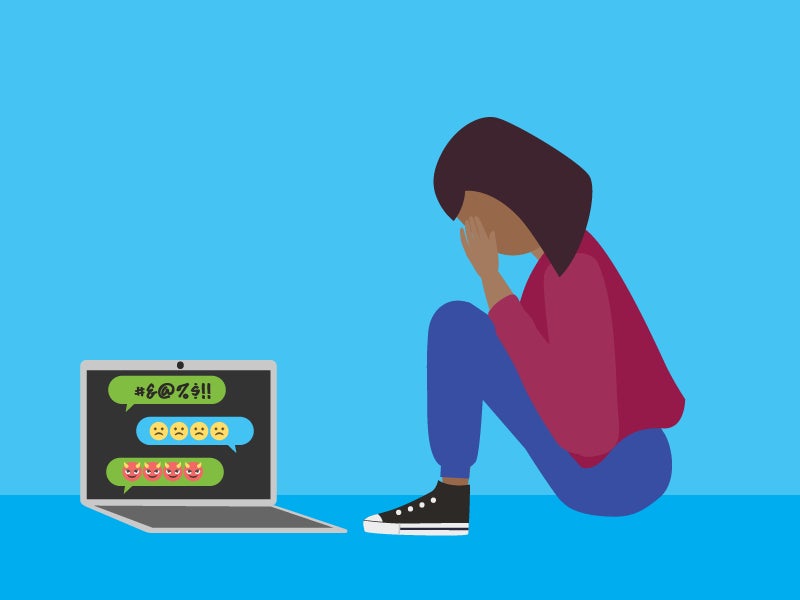
Who should I talk to if someone is bullying me online? Why is reporting important?
If you think you’re being bullied online, it’s important to ask for help from someone you trust. You can talk to your parents, a close family member or another adult you feel comfortable with.
At school, there are people you can turn to for support too. You can reach out to a counsellor, your sports coach or a teacher. If you don’t feel like you are talking to someone you know, you can contact Kids Helpline or Headspace where you can talk to a professional counsellor.
If the bullying is happening on a social platform, you can take action too. Consider blocking the person who is bullying you and reporting their behaviour on the platform. Social media companies have a responsibility to keep their users safe.
If someone is bullying you, it’s a good idea to gather evidence of what’s happening. You can save text messages and take screenshots of social media posts to show what’s been going on. This can be helpful to prove what’s been happening and to show that the bully’s behaviour is not ok.
It’s really important to report the bullying so that it can stop. Letting someone know what’s going on is key to getting the help you need. By reporting it, you can also show the bully that what they’re doing is not acceptable.
If you ever feel like you’re in immediate danger, it’s really important to contact the police on 000.
Hear from each of the social platforms as they answer questions and give advice on dealing with online bullying.
There is no place for bullying and harassment of any kind on Facebook or Instagram. It is against our policies to create an account, post photos, or make comments for the purpose of bullying or harassing someone else.
If you are experiencing bullying online, we encourage you to talk to a parent, teacher or someone else you can trust – you have a right to be safe and supported.
We also make it easy to report bullying directly within Facebook or Instagram. You can send our team a report from a post, comment, story or direct message. Your report is anonymous; the account you reported won’t see who reported them. We have a team who reviews these reports 24/7 around the world in 70+ languages and we will remove anything that violates our policies.
Meta’s Family Center offers resources, insights and expert guidance to help parents, guardians and trusted adults support their teen’s online experiences across our technologies. For Facebook, we have resources that can help you deal with bullying – or understand what to do if you see someone else being bullied. For Instagram, you can learn more about our safety and anti-bullying features on our website.
Bullying is something no one should have to experience, either in person or online. If you are being bullied, our foundational piece of guidance is to talk to someone: a friend, parent, caregiver, trusted adult – anyone whom you trust to listen.
Snapchat’s Community Guidelines clearly and explicitly prohibit bullying, intimidation, and harassment of any kind. We don’t want it on the platform; it’s not in keeping with why Snapchat was created and designed. Learn more here.
Letting us know when you experience or witness someone breaking our rules allows us to take action, which helps to protect you and other members of our community. In addition to reporting violating content or behaviour to Snapchat, speak with a friend, parent, caregiver, or other trusted adult. Our goal is for everyone to stay safe and have fun!
Everyone has the right to feel safe and to be treated with respect and dignity. Bullying and harassment are incompatible with the inclusive environment we aim to foster on TikTok.
If you ever feel someone is bullying you or otherwise being inappropriate, reach out to someone you trust - for example, a parent, a teacher or a caregiver – who can provide support.
We deploy both technology and thousands of safety professionals to help keep bullying off TikTok. We also encourage our community members to make use of the easy in-app reporting tools to alert us if they or someone they know has experienced bullying. You can report videos, comments, accounts and direct messages so that we can take appropriate action and help keep you safe. Reports are always confidential.
You can find out more in our Bullying Prevention guide for teens, caregivers, and educators on how to identify and prevent bullying, and provide support.
Being the target of online abuse and bullying is not easy to deal with. Knowing the appropriate steps to take to address your situation can help you through the process.
When to report it?
We’ve all seen something on the Internet we disagree with or have received unwanted communication. Such behavior does not necessarily constitute online abuse and cyberbullying. If you see or receive a reply you don’t like, unfollow and end any communication with that account.
If the behavior continues, it is recommended that you block the account. Blocking will prevent that person from following you, seeing your profile image on their profile page, or in their timeline; additionally, their replies or mentions will not show in your Notifications tab (although these posts may still appear in search).
Abusive accounts often lose interest once they realize that you will not respond. If the account in question is a friend, try addressing the issue offline. If you have had a misunderstanding, it may be possible to clear the matter up face to face or with the help of a trusted individual.
If you continue receiving unwanted, targeted and continuous replies on X, and feel it constitutes online abuse, consider reporting the behavior to X.
Take threats seriously
If you believe you are in physical danger, contact the local law enforcement authorities who have the tools to address the issue.
If you decide to work with law enforcement, make sure to do the following:
- Document the violent or abusive messages with print-outs or screenshots
- Be as specific as possible about why you are concerned
- Provide any context you have around who you believe might be involved, such as evidence of abusive behavior found on other websites
- Provide any information regarding previous threats you may have received
You can report the content to X here.
Reach out to the people you trust
When dealing with negative or hurtful interactions, it can help to turn to family and friends for support and advice. Oftentimes, talking with your relatives or a close friend may help you figure out how you want to handle the situation or let you express your feelings so you can move on.
Last updated: Feburary 2024.

I’m experiencing cyberbullying, but I’m afraid to talk to my parents about it. How can I approach them?
If you’re experiencing cyberbullying, it’s really important you speak to someone you trust. It can be tough to talk to your parents, but there are things you can do to make it easier. Pick a time to talk when you know they can give you their full attention. Explain to them how serious the problem is for you.
Remember, they might not know as much about technology as you do, so you might need to help them understand what’s going on.
They might not have all the answers right away, but they’ll want to help you, and together you can find a solution. It’s always better to have two heads thinking about the problem. If you’re still unsure about what to do, consider reaching out to other people you trust, such as a school teacher, a family friend or a sports coach.
How can I help my friends report a case of cyberbullying especially if they don’t want to do it?
Anyone can become a target of cyberbullying, and if you see it happening to someone you know, it’s important you offer support.
Listen to your friend and try and understand why they might not want to report the cyberbullying. Ask them how they’re feeling and let them know that they don’t have to formally report anything, but it’s really important to talk to someone who can help.
Keep in mind that your friend may be feeling vulnerable. Be kind and gentle with them. Help them think about who they can talk to and what they can say. Offer to go with them if they decide to report the bullying. Most importantly, remind them that you’re there for them and that you want to help.
If your friend still doesn’t want to report the incident, support them in finding a trusted adult who can help them handle the situation. It’s important to remember that in certain situations, cyberbullying can be really serious.
Doing nothing can make the person feel like everyone is against them or that nobody cares. Your words and actions can make a big difference, so be there for your friend and let them know that you care.
Hear from each of the social platforms as they answer questions and give advice on dealing with online bullying.
We know that it can be hard to report bullying, but everyone deserves to feel safe online. If your friend is experiencing cyberbullying, encourage them to talk to a parent, a teacher or an adult they trust.
Reporting content or accounts to Facebook or Instagram is anonymous and can help us better keep our platforms safe. Bullying and harassment are highly personal by nature, so in many instances, we need a person to report this behaviour to us before we can identify or remove it. You can report something you experience yourself, but it’s also just as easy to submit a report for one of your friends. You can find more information on how to report something on Instagram’s Help Center and on Facebook’s Help Center.
You and your friends may be reluctant to report to a technology platform for any number of reasons, but it’s important to know that reporting on Snapchat is confidential and easy. And remember: You can report Snaps (photos and videos), Chats (messages) and accounts – about your own experiences or on behalf of someone else.
In the more public places of Snapchat, like Discover and Spotlight, simply press and hold on the piece of content and a card with “Report Tile” (as one option) will appear in red. Click that link and our reporting menu will appear. Bullying and harassment are the first categories in the reporting list. Just follow the prompts and provide as much information as you can about the incident. We appreciate you doing your part to help us protect the Snapchat community!
If you believe another member of the TikTok community is being bullied or harassed, there are ways you can provide support. For example, you can make a confidential report on TikTok so that we take appropriate action and help keep your friend safe.
If you know the person, consider checking in with them and encourage them to read our Bullying Prevention guide so they can find out more information about how to identify bullying behaviour and take action.
Being the target of online abuse is not easy. If someone you know is being affected by online abuse, here are some ways that might help, or make the situation easier for them.
Try to understand
Just because the abuse is happening online, doesn’t make it any less real. If a friend or loved one seeks your help with an abusive online situation, listen to what they have to say and take their situation seriously.
Encourage them to get help
While it’s important to be there for them, encourage them to get professional help, whether it be a counselor, therapist, lawyer, law enforcement, or other trusted individual. If you know the individual online only, suggest they seek people offline they can talk with.
Don’t be a bystander
If you see someone being abused online, don’t look the other way. While it can be tempting to retaliate against the abuser with hurtful words, this is usually what they want you to do. Instead, reach out to your friend or family member with positive words to remove the attention from the abuser.
Report content to us
When an account is particularly harassing or threatening, tell us about it by reporting the account or posts to us. It will take a few steps, and your report will help us make X a better place.
Read more about reporting potential violations of the X Rules
Last updated: February 2024.

How do we stop cyberbullying without giving up access to the Internet?
There are a lot of great things about being online, but it also has its risks that we need to be aware of and protect ourselves from.
If you experience cyberbullying, you might feel like deleting certain apps or staying away from the internet for a while. Taking a break can give you time to heal, but it’s not a long-term solution as the internet is very much part of our everyday lives.
Remember, you didn’t do anything wrong, so why should you be the one to suffer? In fact, if you go offline, it might show the bullies that their behaviour is working.
We all want cyberbullying to stop, and that’s why it’s important to report it. But creating a better internet goes beyond just calling out the bullies. We have to be careful about what we share or say online that might hurt others. Let’s be kind to each other, both on and offline. It’s up to all of us to make a positive difference.
Hear from each of the social platforms as they answer questions and give advice on dealing with online bullying.
We’re continuously developing new technologies to encourage positive interactions and take action on harmful content, and launching new tools to help people have more control over their experience. Here are some examples from Instagram:
- When someone writes a caption or a comment that our artificial intelligence detects as potentially offensive or intended to harass, we will show them an alert that asks them to pause and reflect on whether they would like to edit their language before it’s posted.
- Comments with common offensive words, phrases or emojis are automatically hidden or filtered out with the ‘Hide comments’ setting, which is defaulted on for all people. If you want an even more personalized experience, you can create a custom list of emojis, words or phrases you don’t want to see, and comments containing these terms won’t appear under your posts and messages will be sent to a filtered inbox. All of these filters can be found in your ‘Hidden Words’ settings.
- You can always block or mute an account that is bullying you, and that account will not be notified. If you don’t feel comfortable taking those actions, ‘Restrict’ is a more subtle way to protect your account from unwanted interactions. Once ‘Restrict’ is enabled, comments on your posts from a person you have restricted will only be visible to that person. You can choose to view the comment by tapping “See Comment”; approve the comment so everyone can see it; delete it; or ignore it. You won’t receive any notifications for comments from a restricted account.
Our priority is to foster a welcoming and safe environment where people feel free to express themselves authentically. Our Community Guidelines make clear that we do not tolerate members of our community being shamed, bullied or harassed.
We use a combination of technology and moderation teams to help us identify and remove abusive content or behaviour from our platform.
We also provide our community with an extensive range of tools to help them better control their experience – whether it's control over exactly who can view and interact with your content or filtering tools to help you stay in control of comments. You can find out about them on our Safety Centre.
We’ve all seen something on the Internet we disagree with or have received unwanted communication. Such behavior does not necessarily constitute online abuse and cyberbullying. If you see or receive a reply you don’t like, unfollow and end any communication with that account.
If the behavior continues, it is recommended that you block the account. Blocking will prevent that person from following you, seeing your profile image on their profile page, or in their timeline; additionally, their replies or mentions will not show in your Notifications tab (although these posts may still appear in search).
Abusive accounts often lose interest once they realize that you will not respond. If the account in question is a friend, try addressing the issue offline. If you have had a misunderstanding, it may be possible to clear the matter up face to face or with the help of a trusted individual.
If you continue receiving unwanted, targeted and continuous replies on X, and feel it constitutes online abuse, consider reporting the behavior to X.
Last updated: February 2024.
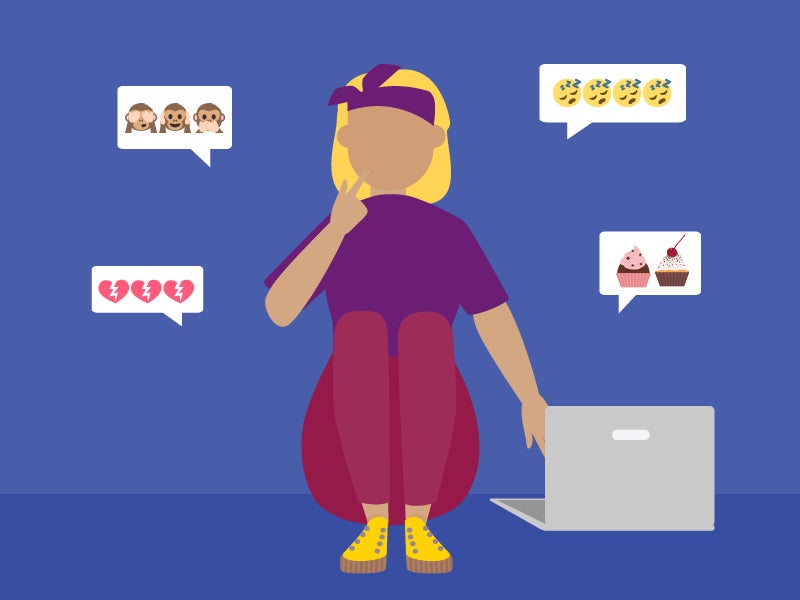
How do I prevent my personal information from being used to manipulate or humiliate me on social media?
Before you post or share anything online, it’s important to think twice. Remember that whatever you put out there can stay online forever and might be used to harm you later. Be careful not to give out personal information like your address, phone number, or the name of your school.
- Take some time to learn about the privacy settings on your favourite social media apps. Here are some things you can do on many of them:
- Adjust your account privacy settings to control who can see your profile, send you direct messages or comment on your posts.
- If someone says something hurtful, you can report their comments, message, photos or videos and ask for them to be taken down.
- If you want to stop someone from seeing your profile or contacting you, you can completely block them.
- You can choose to have comments from certain people appear only to them, without completely blocking them.
- If you want, you can delete posts on your profile or hide them from specific people.
- Most of the time, when you block, restrict or report someone on social media, they won’t be notified about it.
By taking these steps, you can have more control over your online presence and protect yourself from potential harm.
Is there a punishment for cyberbullying?
Schools take bullying seriously and will take action against it, including cyberbullying. If other student are cyberbullying you, it’s important to report it to the school.
Everyone who experiences any kind of violence, including bullying and cyberbullying, deserves justice and for the person responsible to held accountable.
In Australia, there isn’t a specific law that makes cyberbullying a crime. However, the existing laws have been changed to include cyberbullying as something that can be prosecuted. You can reach out to eSafety for help and advice.
Hear from each of the social platforms as they answer questions and give advice on dealing with online bullying.
On Facebook, we have a set of Community Standards, and on Instagram, we have Community Guidelines. We take action when we are aware of content that violates these policies, like in the case of bullying or harassment, and we are constantly improving our detection tools so we can find this content faster.
Making sure people don’t see hateful or harassing content in direct messages can be challenging, given they’re private conversations, but we are taking steps to take tougher action when we become aware of people breaking our rules. If someone continues to send violating messages, we will disable their account. We’ll also disable new accounts created to get around our messaging restrictions and will continue to disable accounts we find that are created purely to send harmful messages.
On Snapchat, reports of cyberbullying are reviewed by Snap’s dedicated Trust & Safety teams, which operate around the clock and around the globe. Individuals found to be involved in cyberbullying may be given a warning, their accounts might be suspended or their accounts could be shut down completely.
We recommend leaving any group chat where bullying or any unwelcome behaviour is taking place and please report the behaviour or the account to us.
Our Community Guidelines define a set of norms and common code of conduct for TikTok and they provide guidance on what is and is not allowed to make a welcoming space for everyone. We make it clear that we do not tolerate members of our community being shamed, bullied or harassed. We take action against any such content and accounts, including removal.
When we take enforcement actions, we may do so either on a specific piece of content (e.g., an individual post or Direct Message), on an account, or employ a combination of these options. In some instances, this is because the behavior violates the X Rules. Other times, it may be in response to a valid legal request from an authorized entity in a given country. Below are some of the enforcement actions that we may take.
You can find more on our enforcement actions here.
Last updated: February 2024.
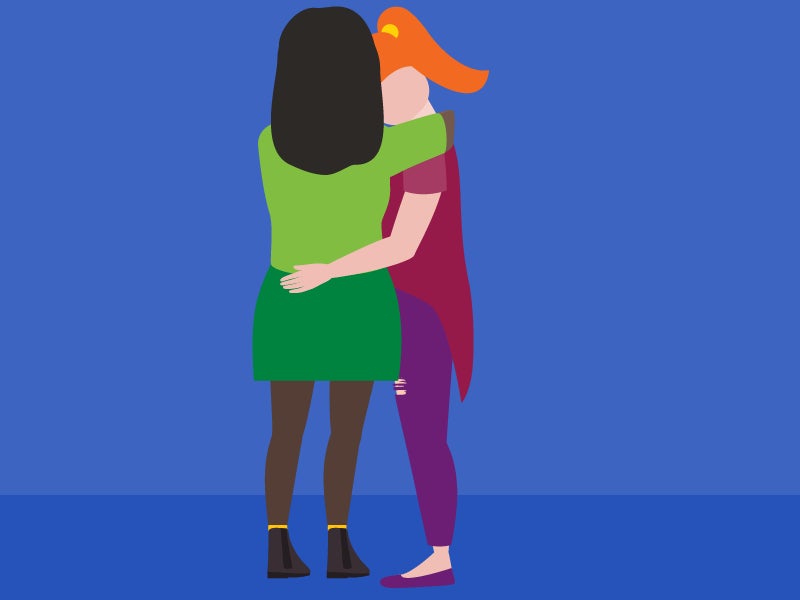
Technology companies don’t seem to care about online bullying and harassment. Are they being held responsible?
Tech companies are starting to take online bullying seriously. They are working on ways to help and protect their users from cyberbullying. They are creating new tools, giving advice and making it easier to report online abuse.
But we still need more. Many young people go through cyberbullying every day, and some face really harsh forms of online abuse. It’s really sad but some have even ended their own lives because of it.
Tech companies have a big responsibility to keep their users safe, especially kids and young people like you.
It’s important for all of us to make sure these companies do their job. We should hold them accountable when they’re not doing enough to protect us. We all have a role to play in making the internet a safer place.
Are there any online anti-bullying tools for children or young people?
Every social media platform has different tools available to help you stay safe. These tools can let you control who can comment on or see your posts, who can become your friend and report bullying. They often have simple steps to block, mute or report cyberbullying.
Social media companies also provide educational tools and guidance for kids, parents and teachers to learn about the risks and ways to stay safe online.
But you can also be the first line of defence against cyberbullying. Think about where cyberbullying happens in your community and how you can help. You can raise your voice, stand up to bullies, talk to trusted adults or raise awareness about the issues. Even a small act of kindness can make a big difference.
If you ever feel worried about your safety or something that happened online, it’s really important to talk to an adult you trust right away. You can contact eSafety, Kids Helpline or Headspace.
Hear from each of the social platforms as they answer questions and give advice on dealing with online bullying.
We have a number of anti-bullying tools across Facebook and Instagram:
- You can block people, including any existing and new accounts they might create.
- You can mute an account and that account will not be notified.
- You can use ‘Restrict’ to discreetly protect your account without that person being notified.
- You can moderate comments on your own posts.
- You can modify your settings so that only people you follow can send you a direct message.
- We will notify someone when they’re about to post something that might cross the line, encouraging them to reconsider.
- We automatically filter out comments and message requests that don’t go against our Community Guidelines but may be considered inappropriate or offensive. You can also create your own custom list of emojis, words or phrases that you don’t want to see.
For more tips and ideas, visit Instagram’s Safety page and Facebook’s Bullying Prevention Hub. We also offer resources, insights and expert guidance for parents and guardians on our Family Center.
We want teens and young adults to be aware of the blocking and removal functions on Snapchat. Clicking on the person’s avatar will bring up a three-dot menu in the upper right-hand corner. Opening that menu offers the option of “Manage Friendship,” which, in turn, offers the ability to Report, Block or Remove the person as a friend. If you block someone, they will be told that their Snaps and Chats to you will be delivered once the relationship is restored.
It’s also a good idea to check privacy settings to ensure they continue to be set to the default setting of “Friends Only.” This way, only people you’ve added as Friends can send you Snaps and Chats.
We also recommend reviewing your Friends’ list from time to time to ensure it includes those people you still want to be friends with on Snapchat.
Alongside the work that our safety teams do to help keep bullying and harassment off our platform, we provide an extensive range of tools to help you control your TikTok experience. You can find these in full on our Safety Centre. Here are a few highlights:
- You can restrict who comments on your videos to no one, just friends or everyone (for those aged under 16, the everyone setting is not available)
- You can filter all comments or those with specific keywords that you choose. By default, spam and offensive comments are hidden from users when we detect them.
- You can delete or report multiple comments at once, and you can block accounts that post bullying or other negative comments in bulk too, up to 100 at a time.
- A comment prompt asks people to reconsider posting a comment that may be inappropriate or unkind, reminding them of our Community Guidelines and allowing them to edit their comments before sharing.
We want everybody to be safe on X. We continue to launch and improve tools for people to feel safer, be in control and manage their digital footprint. Here are some safety tools anyone on X can use:
- Select who can reply to your posts – either everyone, only people you follow or only people you mention
- Mute – removing an account's posts from your timeline without unfollowing or blocking that account
- Block – restricting specific accounts from contacting you, seeing your posts, and following you
- Report – filing a report about abusive behaviour
- Safety mode – a feature that temporarily blocks accounts for using potentially harmful language or sending repetitive and uninvited replies or mentions.
Last updated: February 2024.



